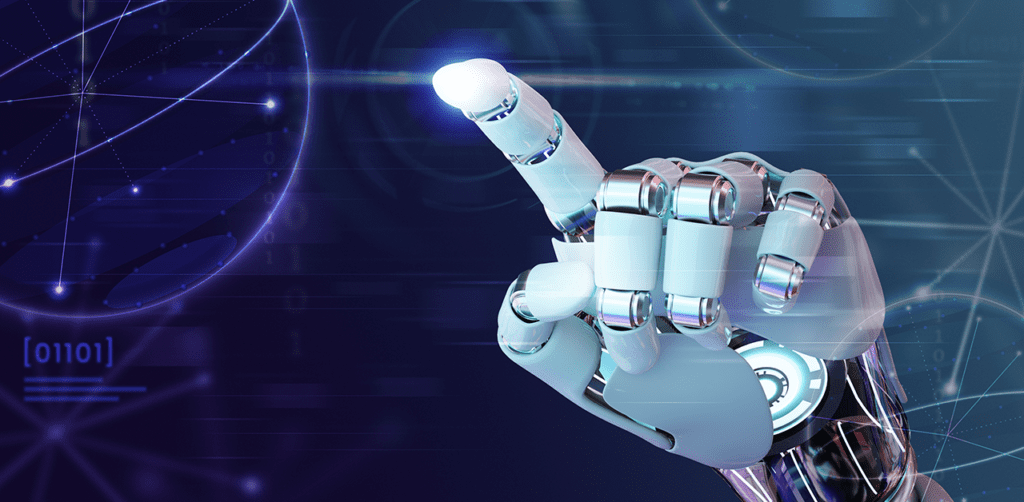What is machine learning?
Machine learning is a subfield of artificial intelligence (AI) that focuses on the development of statistical and algorithms models that enable computers to learn from data and make predictions or decisions without being explicitly programmed.
What are the different types of machine learning?
There are three types of machine learning:
- Supervised learning
- Unsupervised learning
- Semi-Supervised Machine Learning
- Reinforcement learning
What is the difference between Supervised, Unsupervised and Reinforcement learning?
- Supervised learning is the use of labeled datasets to train algorithms that to classify data or predict outcomes accurately.
- Unsupervised learning identifies hidden data patterns from an unlabeled dataset to predict data without the need for human intervention.
- Reinforcement learning helps data model by trial and error within an interactive environment, using its own feedback.
What is a model in machine learning?
A model in machine learning is a mathematical representation of a system or process that can be trained on data to make predictions or decisions. The model learns from the data and adjusts its parameters to minimize the error between its predictions and the actual values.
What is an algorithm in machine learning?
Machine learning algorithms refer to software programs that have the capability to detect underlying patterns from data, make predictions based on this information, and enhance their performance through learning from experience. Machine learning is implemented in almost every industry including finance, business, genetics and genomics, healthcare, retail, education and much more.
What is a neural network?
A neural network is an artificial intelligence technique that emulates the human brain’s data processing ability. It comprises a set of algorithms that can identify correlations within large datasets. The neural network’s layers are interlinked through nodes, resulting in a complex network of interconnections, hence the name “neural network.”
What is deep learning?
Deep learning is a subfield of machine learning that uses artificial neural networks to model and solve complex problems by processing large amounts of data. It is inspired by the structure and function of the human brain, and can learn to recognize patterns and features from large amounts of data without human intervention. Deep learning has been successfully applied to image recognition, natural language processing, speech recognition, and many other domains.
What is feature engineering?
Feature engineering is the process of selecting, transforming, and extracting features from the raw data to improve the performance of a machine learning model. The goal is to create a set of informative features that capture the underlying patterns and relationships in the data.
What is reinforcement learning?
Reinforcement learning is a type of machine learning where an agent learns to make decisions through trial and error, with the goal of maximizing a reward signal.
What is the difference between training and testing data?
Training data is used to train the machine learning model, while testing data is used to evaluate its performance. The goal is to create a model that can generalize well to new, unseen data.
What is bias in machine learning?
Bias in machine learning refers to systematic errors or inaccuracies in the model that arise from the assumptions, limitations, or design choices of the algorithm. Bias can lead to unfair or discriminatory outcomes, especially when the training data is not representative or diverse enough.
What is variance in machine learning?
Variance in machine learning refers to the sensitivity of the model to small fluctuations or noise in the training data. High variance can lead to overfitting, where the model performs well on the training data but poorly on new, unseen data.
What is hyperparameter tuning?
Hyperparameter tuning is the process of selecting the optimal values for the hyperparameters of a machine learning model, such as the learning rate, regularization strength, or number of hidden units. The goal is to find a set of hyperparameters that balance the bias-variance trade-off and maximize the performance of the model.
What is the role of evaluation metrics in machine learning?
Evaluation metrics are used to measure the performance of a machine learning model on a given task, such as classification or regression. Common evaluation metrics include accuracy, precision, recall, F1 score, and mean squared error. The choice of the evaluation metric depends on the specific problem and the desired trade-offs between different types of errors.
What are the advantages of using unsupervised learning?
Unsupervised learning can identify patterns in data without prior knowledge or labeling, making it useful for exploratory data analysis and anomaly detection.
How does reinforcement learning work?
Reinforcement learning involves an agent making decisions and receiving feedback in the form of rewards or penalties, allowing it to learn through trial and error.
What is transfer learning?
Transfer learning involves using a pre-trained model as a starting point for a new problem, reducing the amount of data and training time needed.
What is overfitting and how can it be avoided?
Overfitting occurs when a model is too complex and fits the training data too closely, leading to poor performance on new data. Regularization techniques can help prevent overfitting.
What is the difference between classification and regression?
Classification involves predicting a discrete category or label, while regression involves predicting a continuous value.
What is ensemble learning?
Ensemble learning combines multiple models to improve performance and reduce the risk of overfitting.
How does dimensionality reduction work?
Dimensionality reduction techniques reduce the number of features in a dataset, making it easier to analyze and visualize.
What is the curse of dimensionality?
The curse of dimensionality refers to the challenges that arise when dealing with high-dimensional datasets, such as increased computational complexity and overfitting.
What is batch normalization and how does it work?
Batch normalization is a technique that improves the stability and speed of neural networks by normalizing the inputs to each layer.
What is generative adversarial networks (GANs)?
GANs are a type of deep learning model that can generate new data by learning the underlying distribution of the training data.
What is the difference between bias and variance in machine learning?
Bias refers to the systematic errors that cause a model to consistently underestimate or overestimate the true value, while variance refers to the sensitivity of the model to small fluctuations in the training data.
What is k-fold cross-validation?
K-fold cross-validation is a technique for assessing model performance by partitioning the data into k subsets and using each subset as a validation set in turn.
What is the difference between precision and recall?
Precision measures the proportion of true positives among all predicted positives, while recall measures the proportion of true positives among all actual positives.
What is regularization and why is it important?
Regularization involves adding constraints to a model to prevent overfitting, such as adding penalties to the loss function. It is important because overfitting can lead to poor generalization and performance on new data.
Want to talk to a Machine Learning expert? Contact us.










